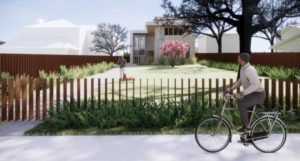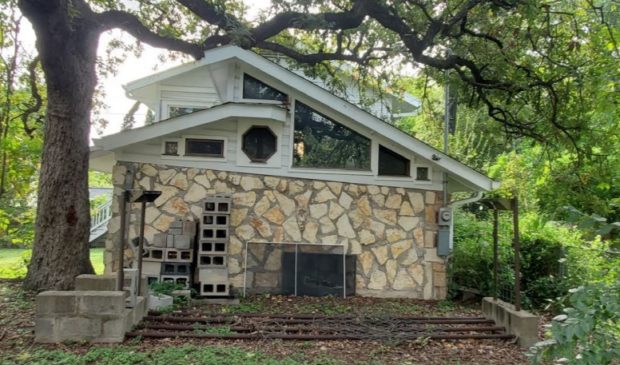Landmark Commission sends West Line case to Architectural Review Committee
Wednesday, July 7, 2021 by
Sean Saldaña Last week, applicants asked the Historic Landmark Commission for permission to demolish a building located in the West Line Historic District and replace it with a one-story cabana and a garage at 1415 W. 10th St.
The building, which was first constructed in 1939, was not approved for demolition; instead, the commission moved to have the case reviewed by the Architectural Review Committee.
One factor working in favor of the applicants is that the building is considered to be non-contributing to the historic district in which it is located.
According to the city, a building is defined as non-contributing when it “was not built during the period of significance for the district … (or it) has architectural modifications that compromise the structure’s ability to convey its historic appearance.”
In theory, the presence of the building has no impact on the neighborhood’s character.
That said, both city staffers and the Historic Landmark Commission wanted to exercise caution before advancing the approval process – not because the building will be considered a loss to the neighborhood, but because the design of the building potentially replacing it has raised concerns about how it could affect the neighborhood’s character.
Plans submitted to the city by the applicant show that the proposed design of the new building is far more modern than the rest of the West Line Historic District. According to the Department of the Interior, the architectural styles most prominent in the area are Craftsman and Classical Revival-influenced bungalows built in the early 20th century.
The earliest homes started popping up in the West Austin neighborhood in the 1850s and development continued until 1948, marking nearly a century of continued expansion in the area. The neighborhood’s historic period officially ended in 1955.
From 1910 to 1930, nearly 20 subdivisions were added to the neighborhood, motivated heavily by the neighborhood’s proximity to Austin’s then-robust streetcar system.

Adrienne and Kirk Goldsberry, who live in a nearby home, submitted comment saying they felt “the project is considerably larger and different in style than most if not all other buildings in the Old West Austin neighborhood. The steel fencing is not compatible with the neighborhood and is rather ‘harsh’ in a family-friendly, walkable area.”
At the meeting last week, Chair Terri Myers relayed similar concerns, saying that the design “is quite a departure, and I’d like to have the opportunity to meet with the applicants and discuss how it might fit into the character of the historic district better.”
In the end, the commissioners followed city staffers’ suggestion and voted to have the case further reviewed by the Architectural Review Committee with the hopes of finding a middle ground between the homeowner’s design goals and the concerns over neighborhood character.
The case is set to come before the Historic Landmark Commission again at the July 26 meeting.
The Austin Monitor’s work is made possible by donations from the community. Though our reporting covers donors from time to time, we are careful to keep business and editorial efforts separate while maintaining transparency. A complete list of donors is available here, and our code of ethics is explained here.
You're a community leader
And we’re honored you look to us for serious, in-depth news. You know a strong community needs local and dedicated watchdog reporting. We’re here for you and that won’t change. Now will you take the powerful next step and support our nonprofit news organization?







